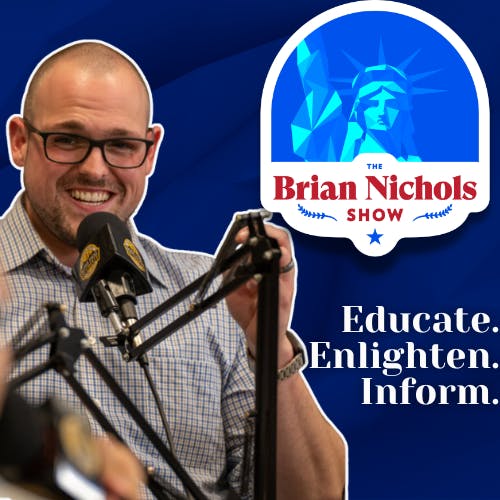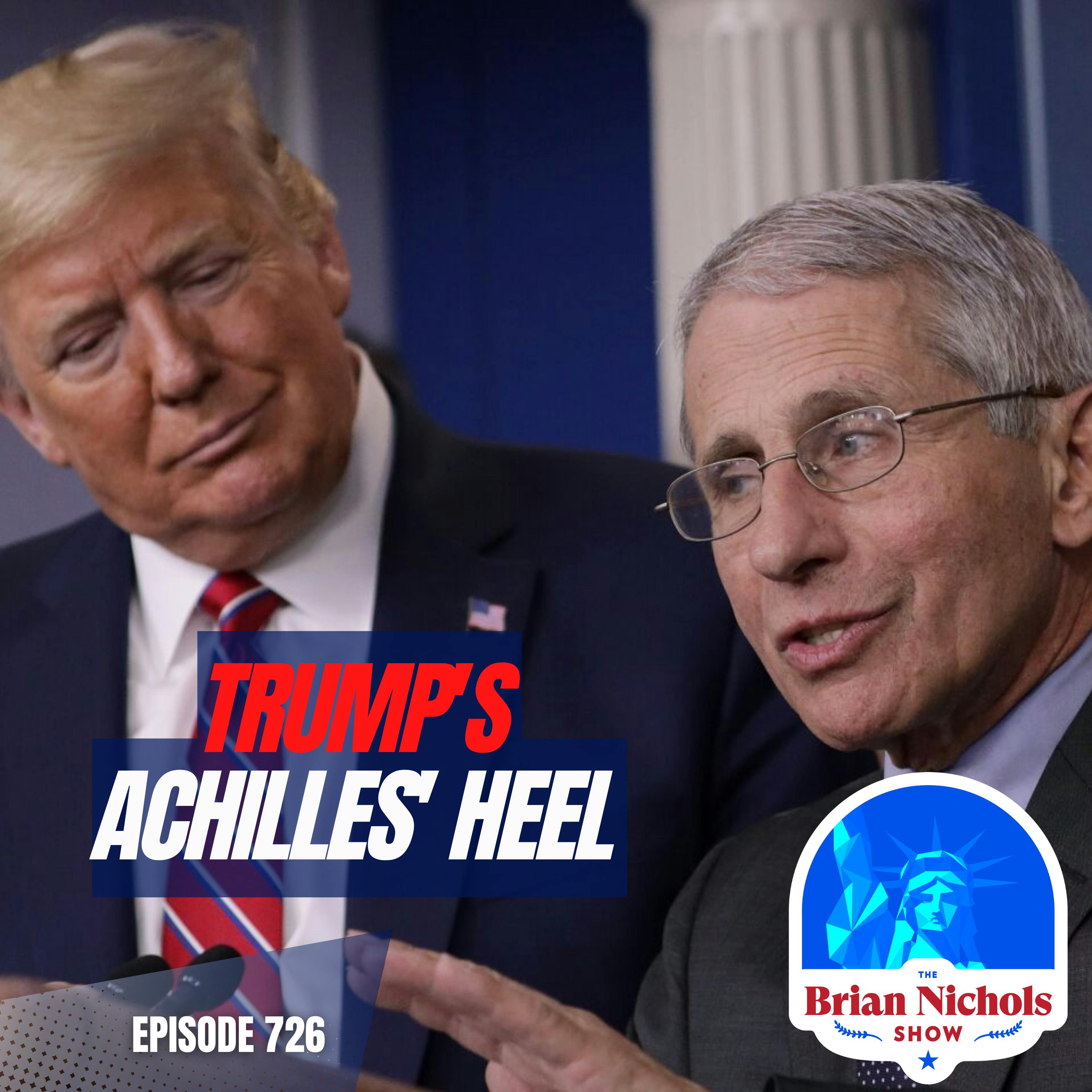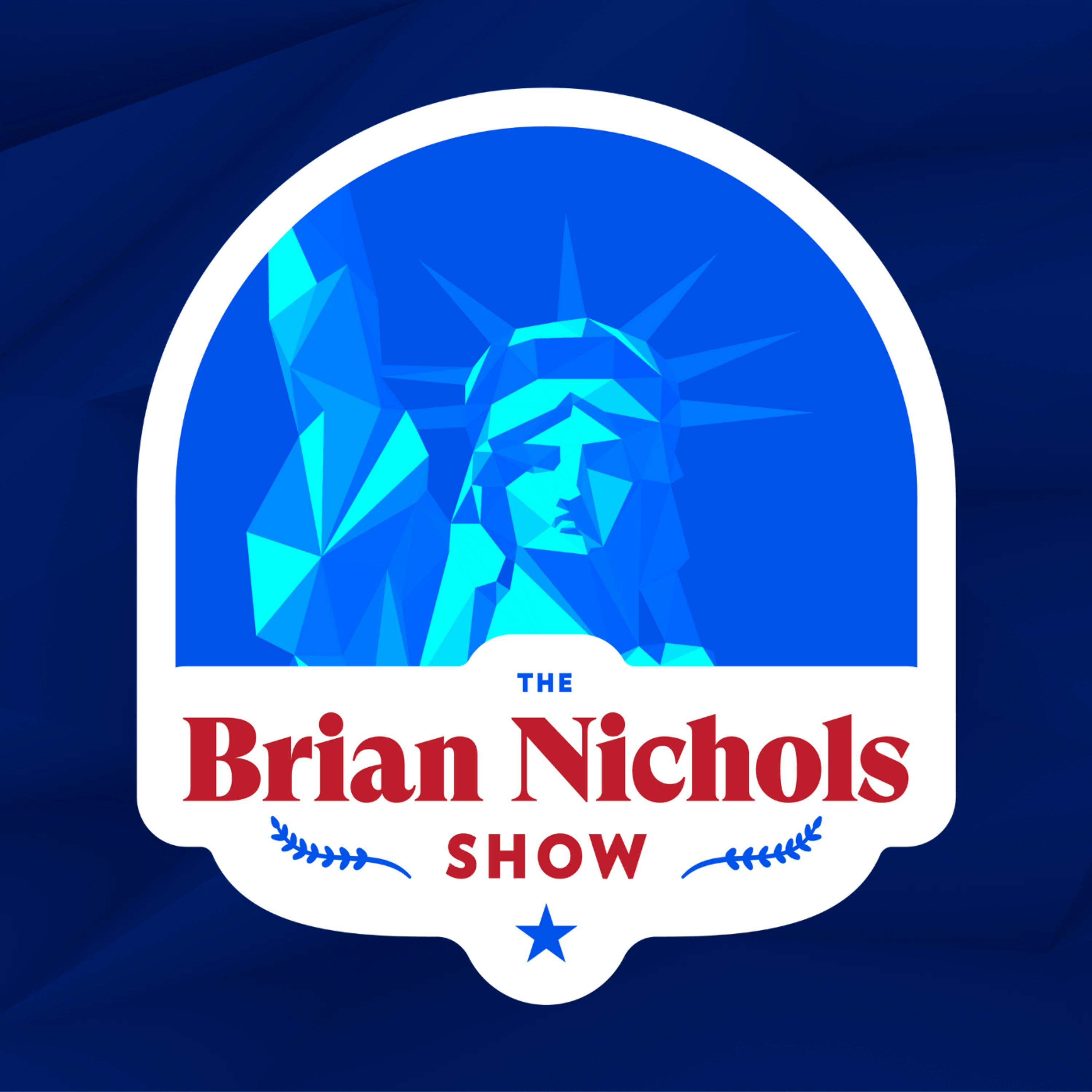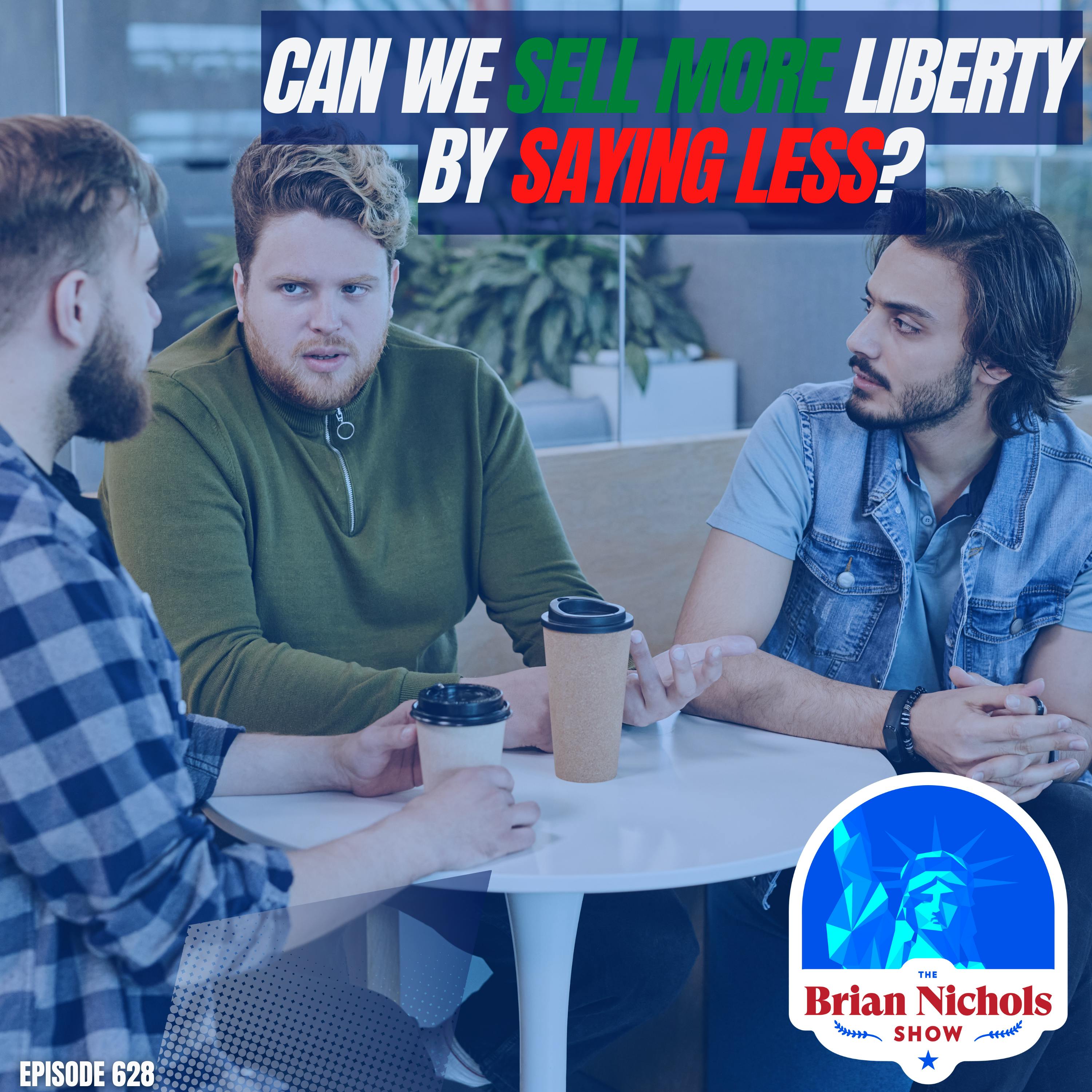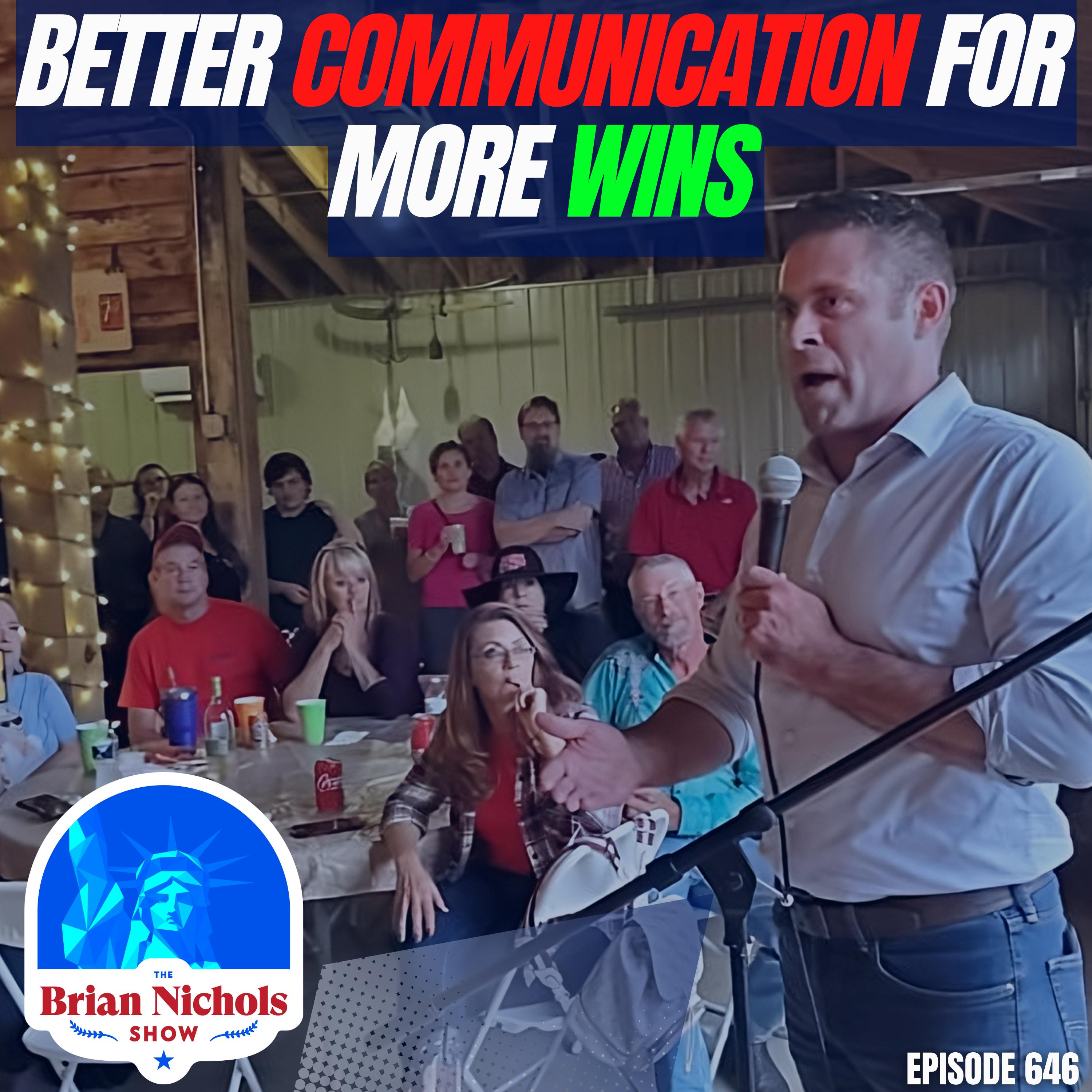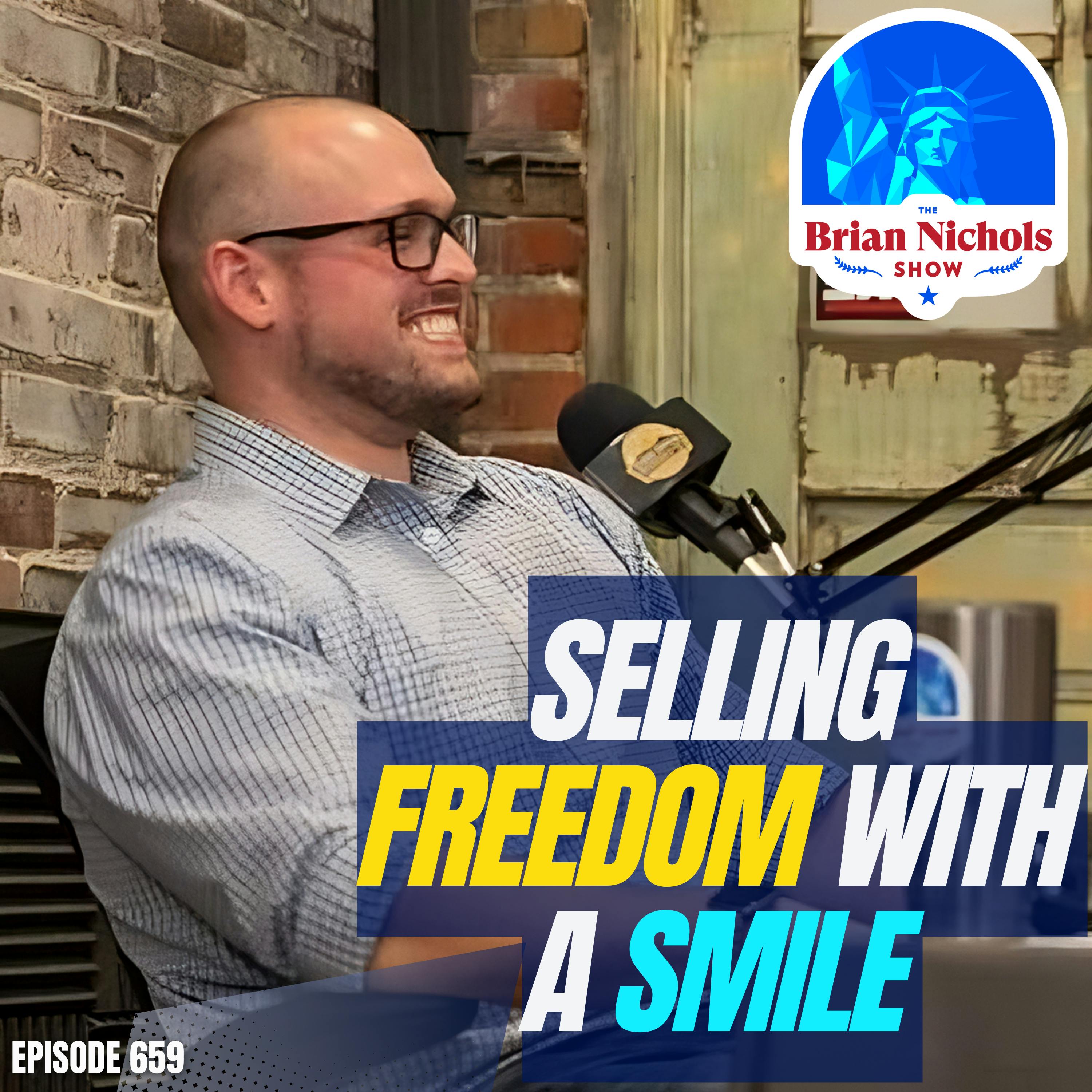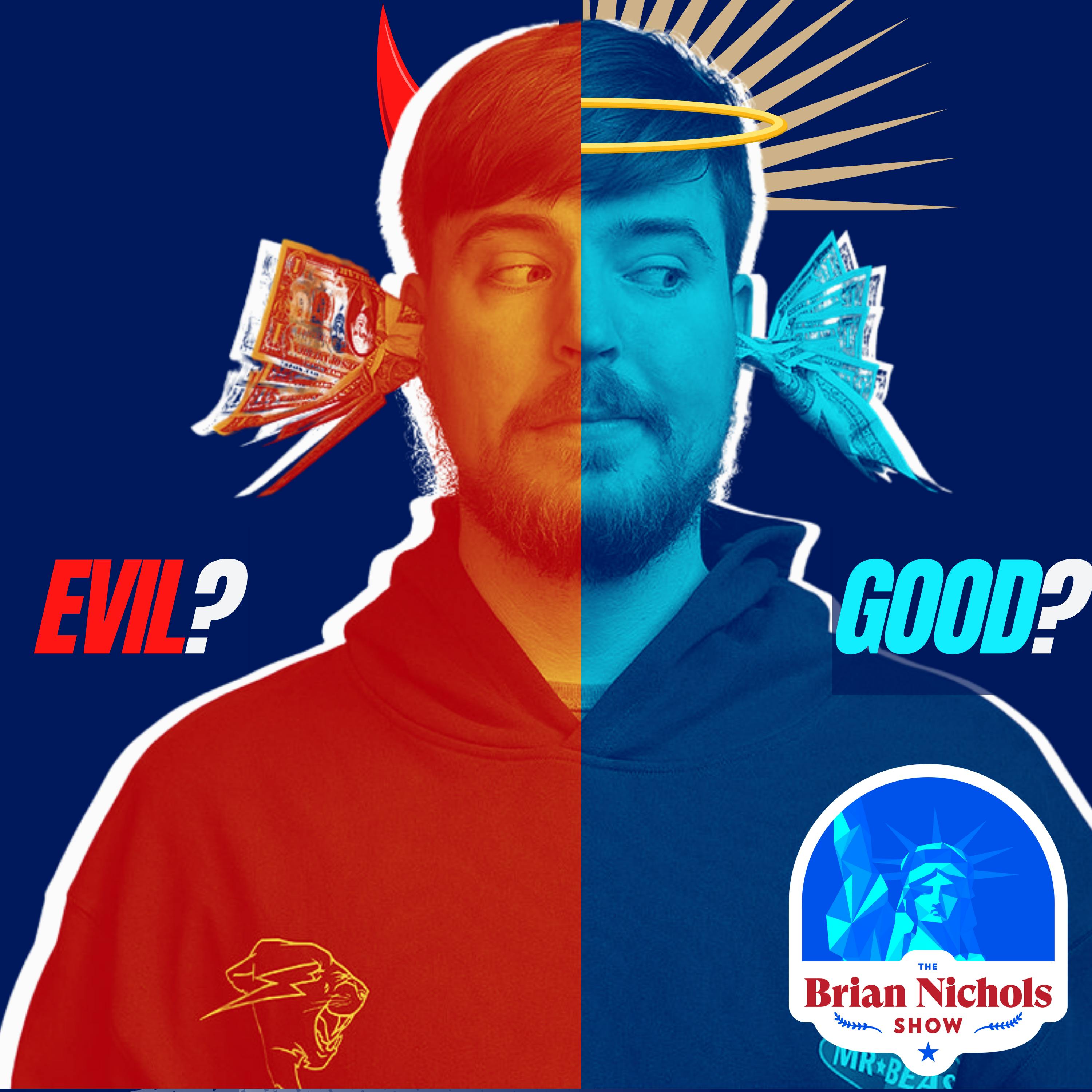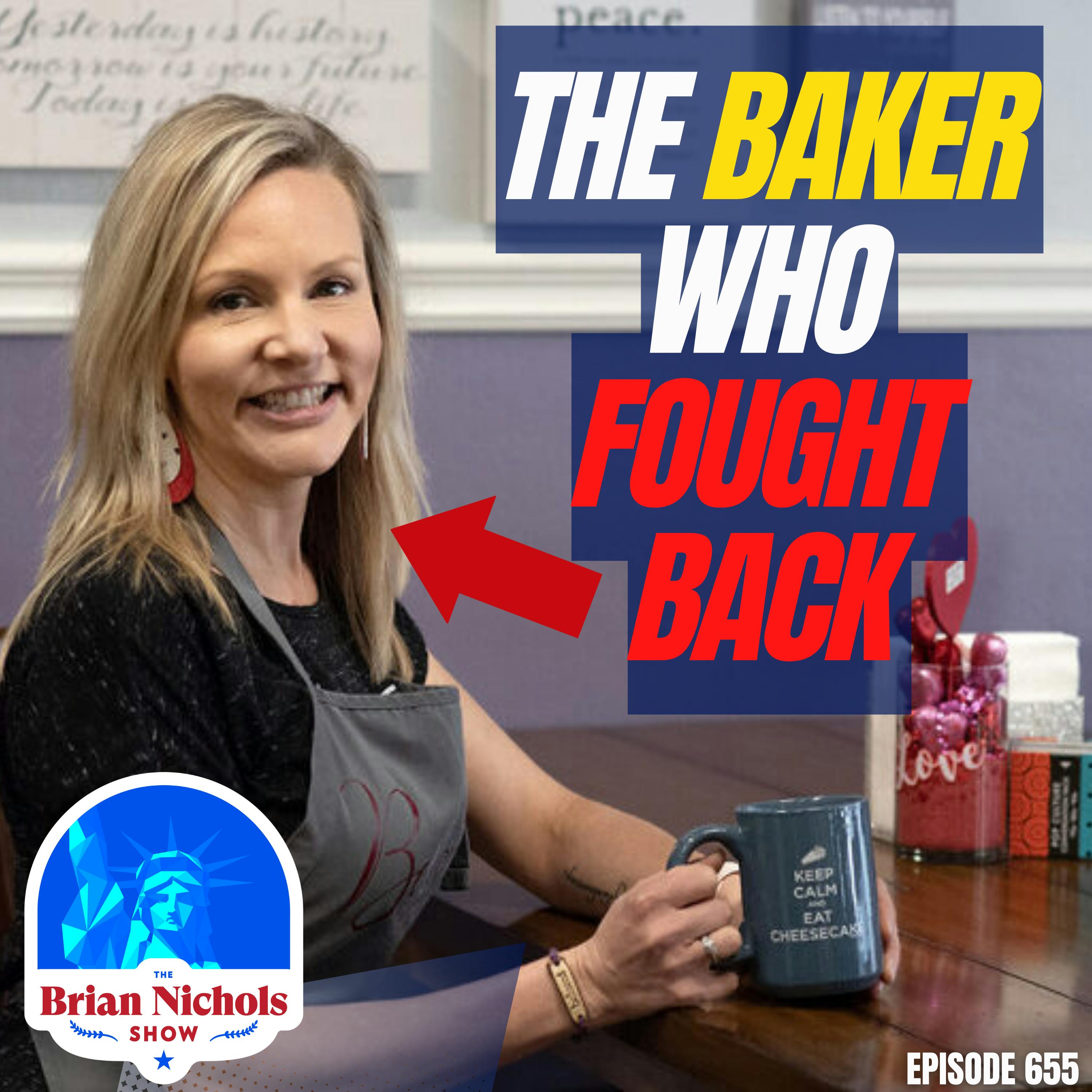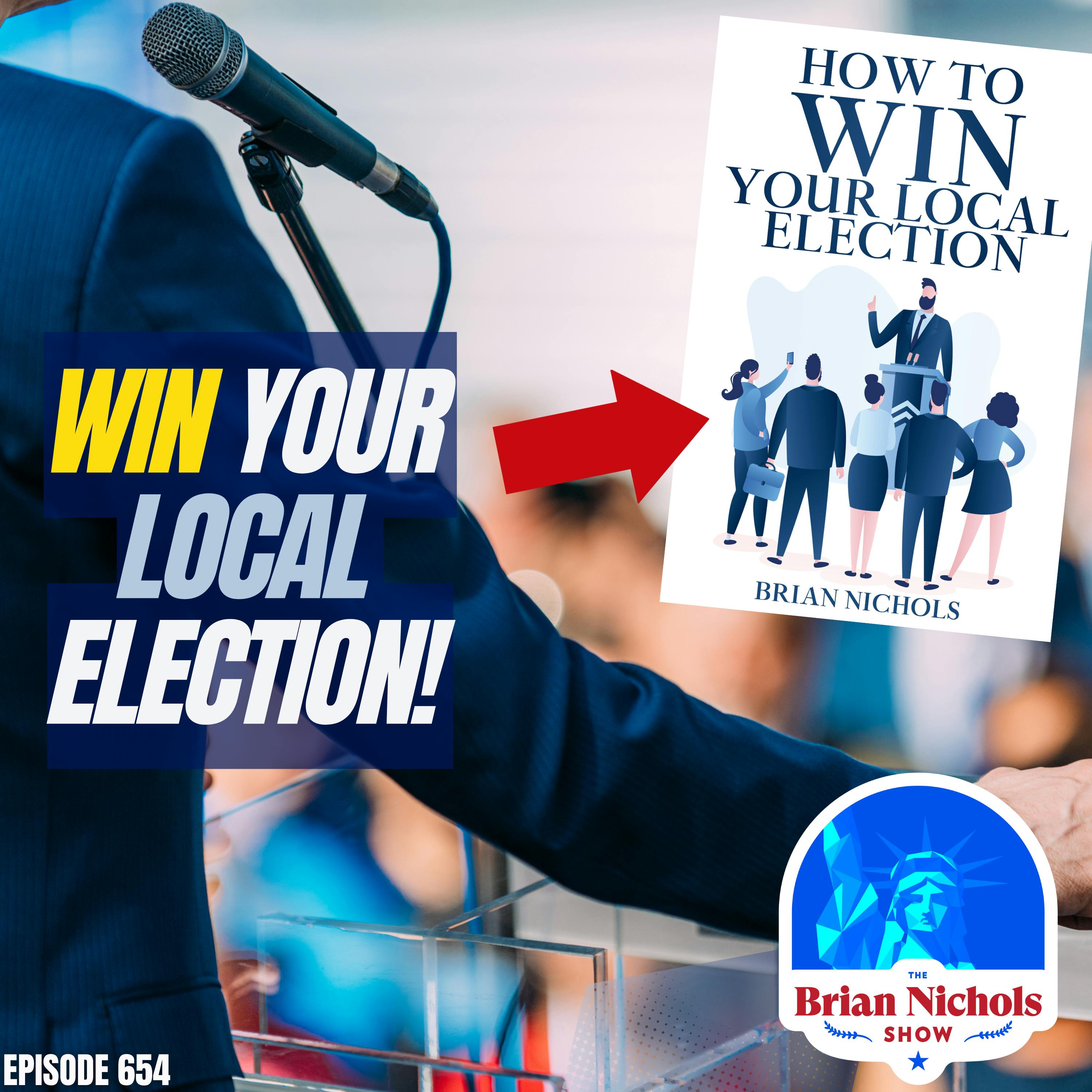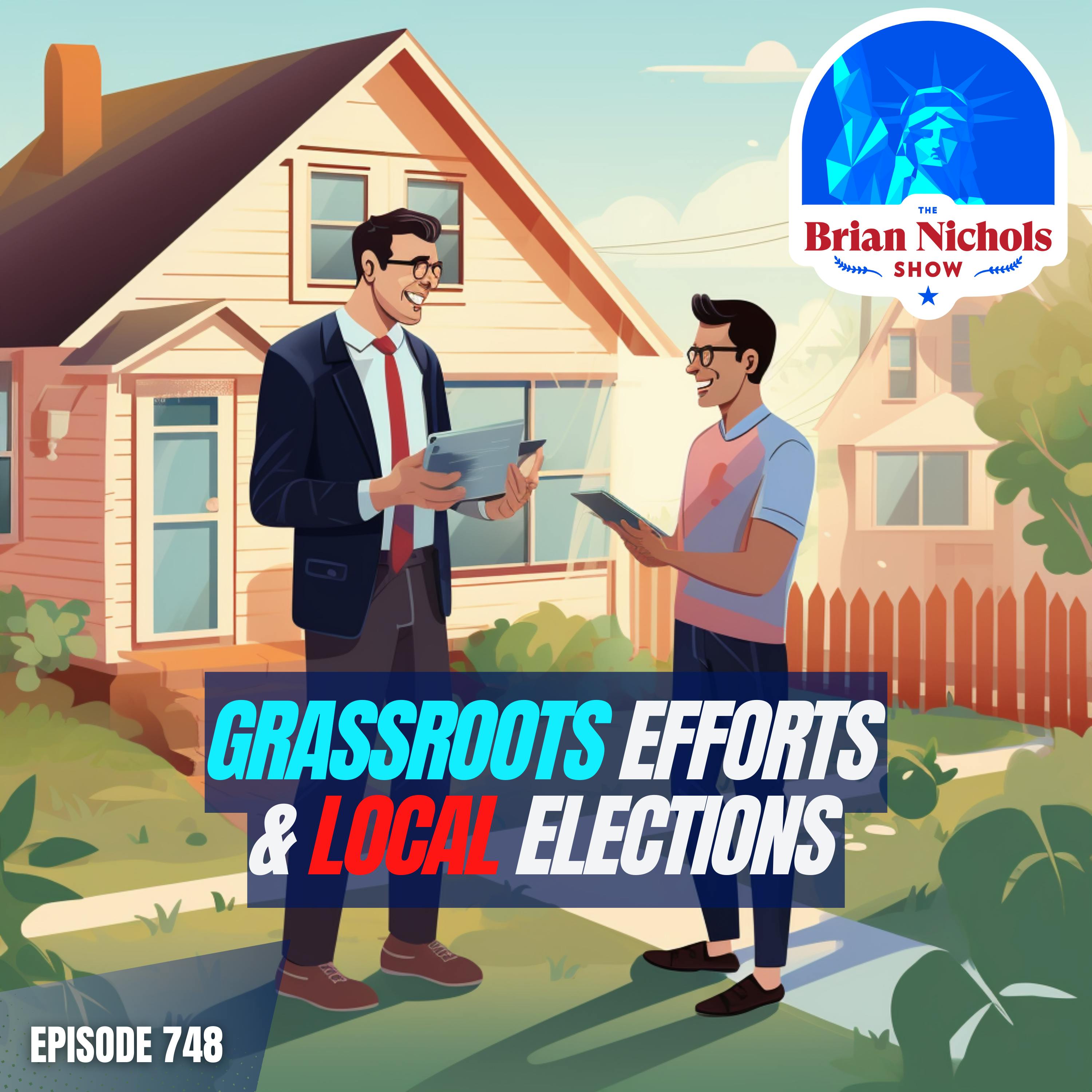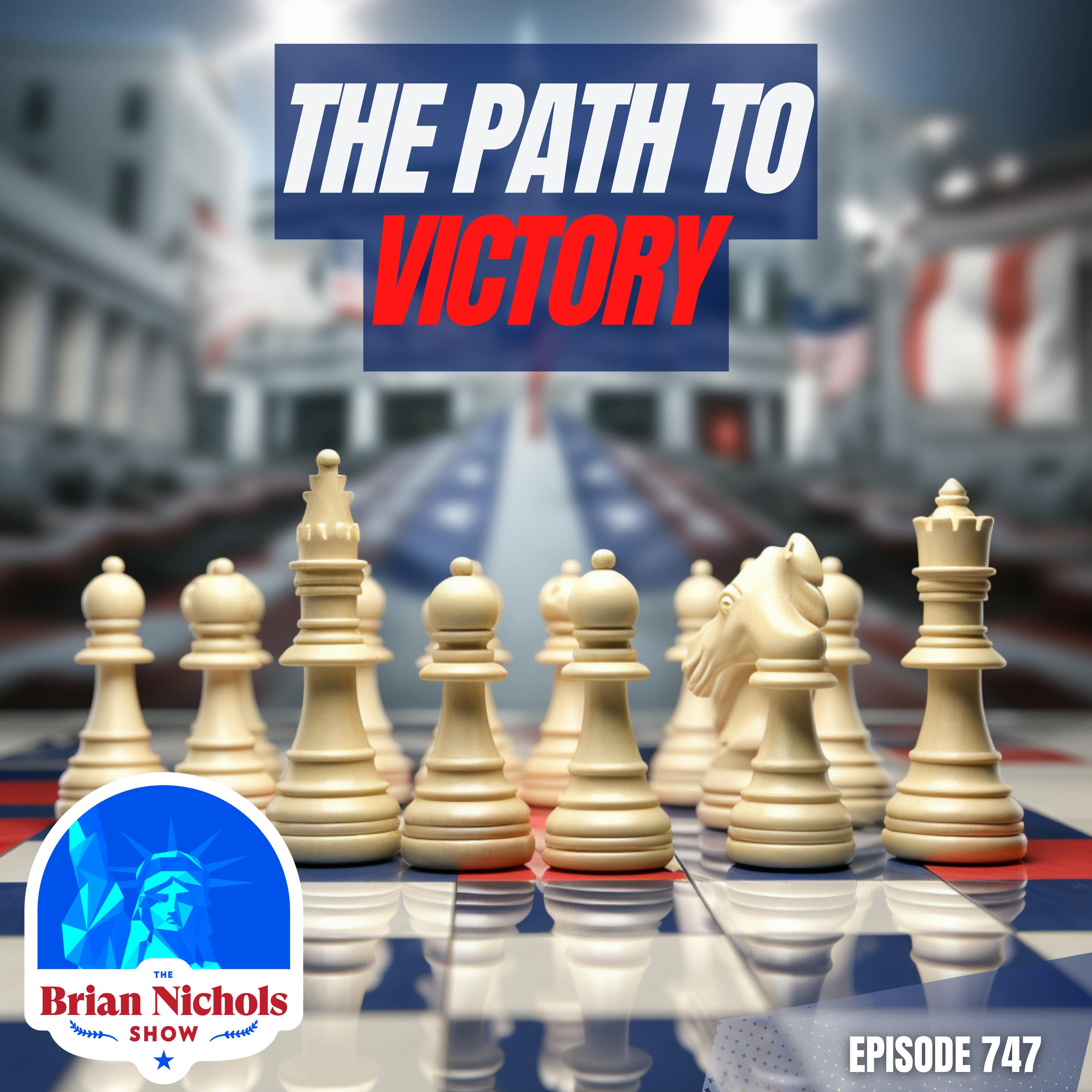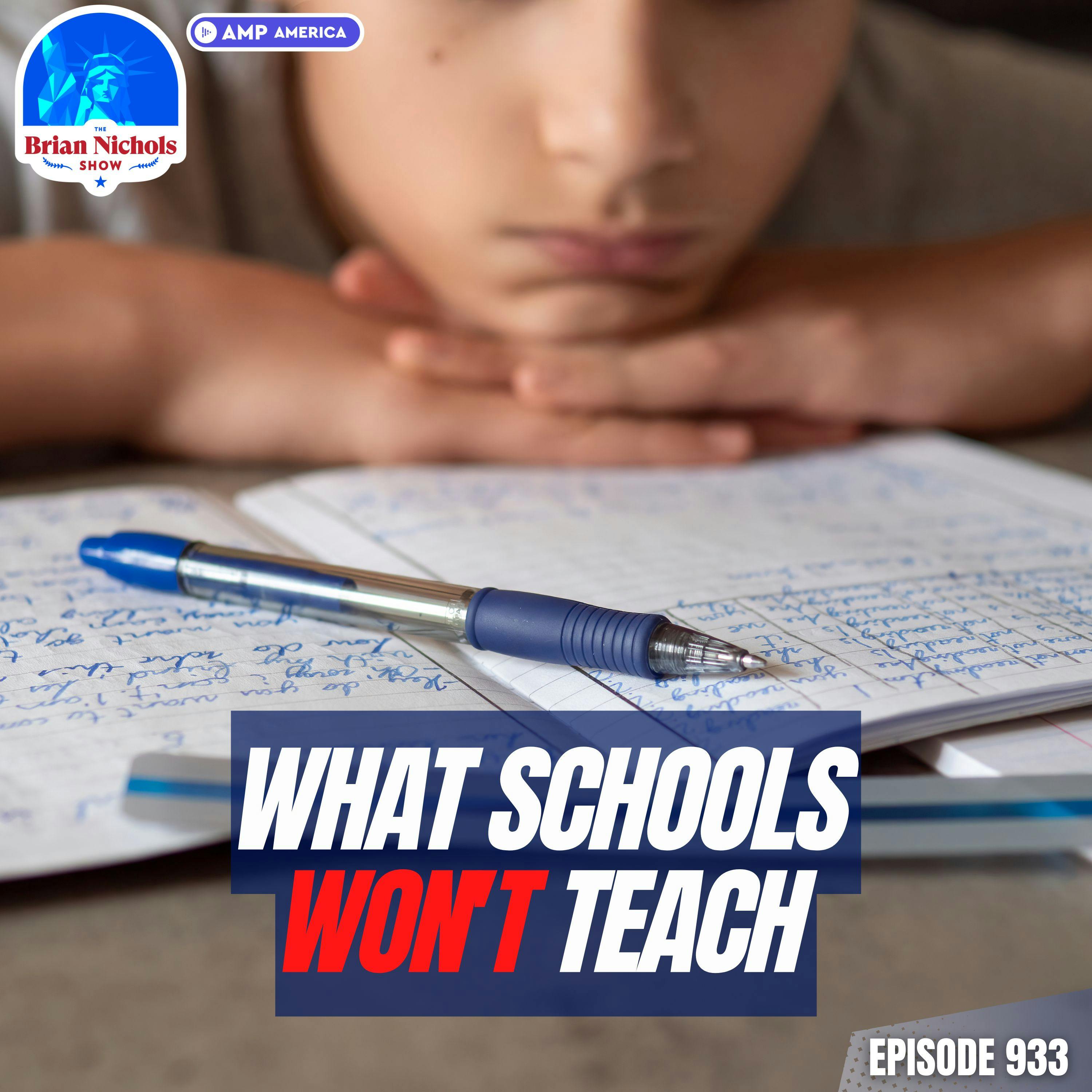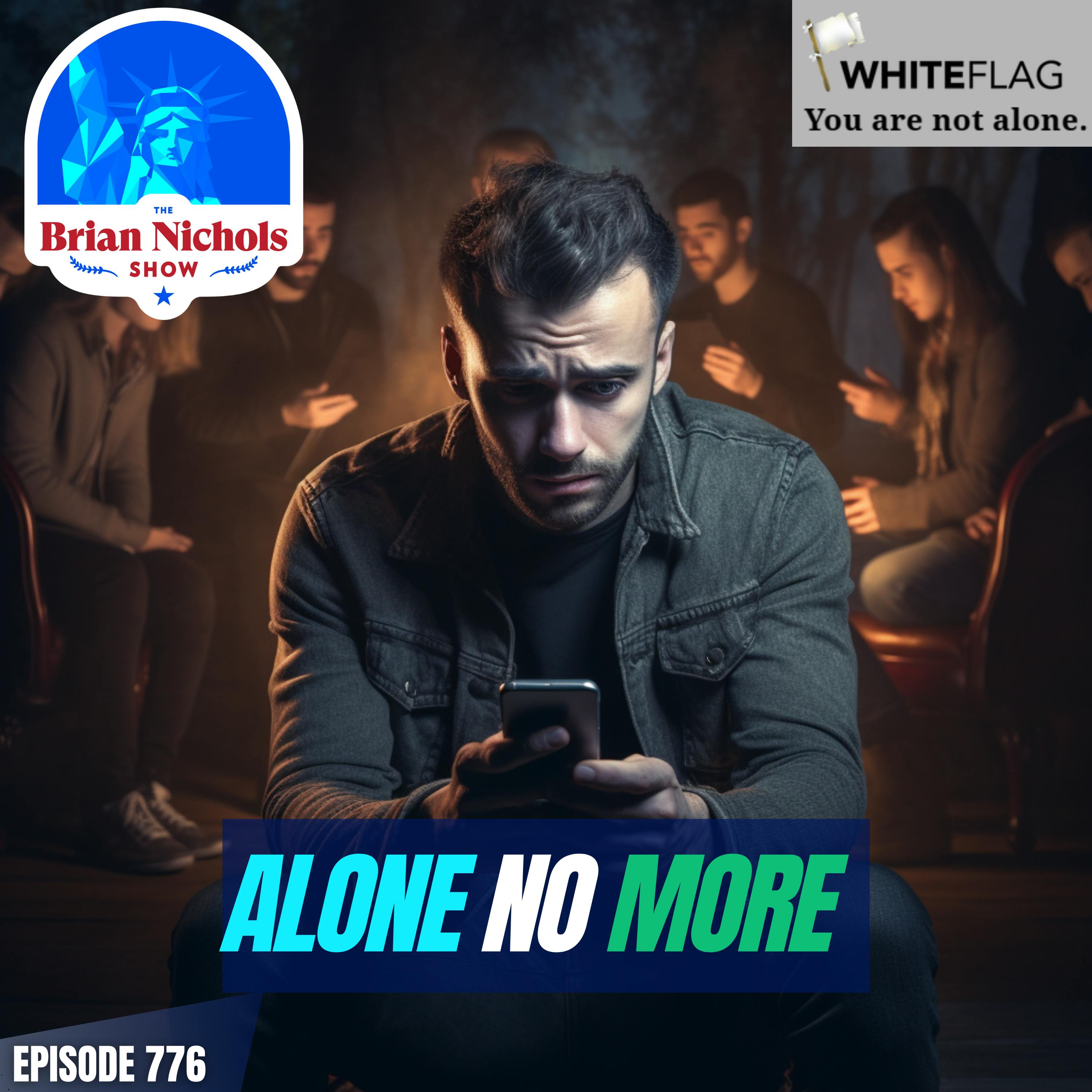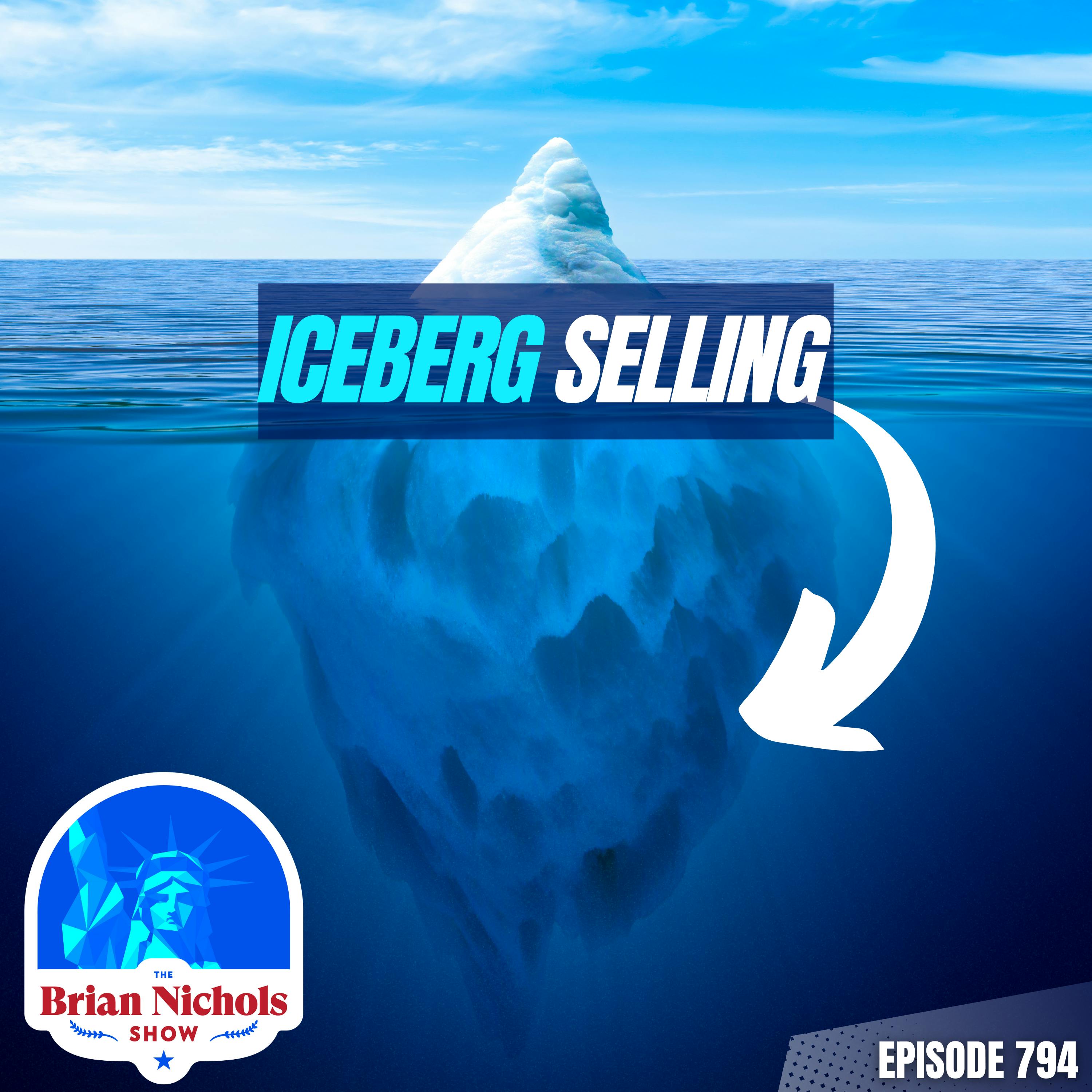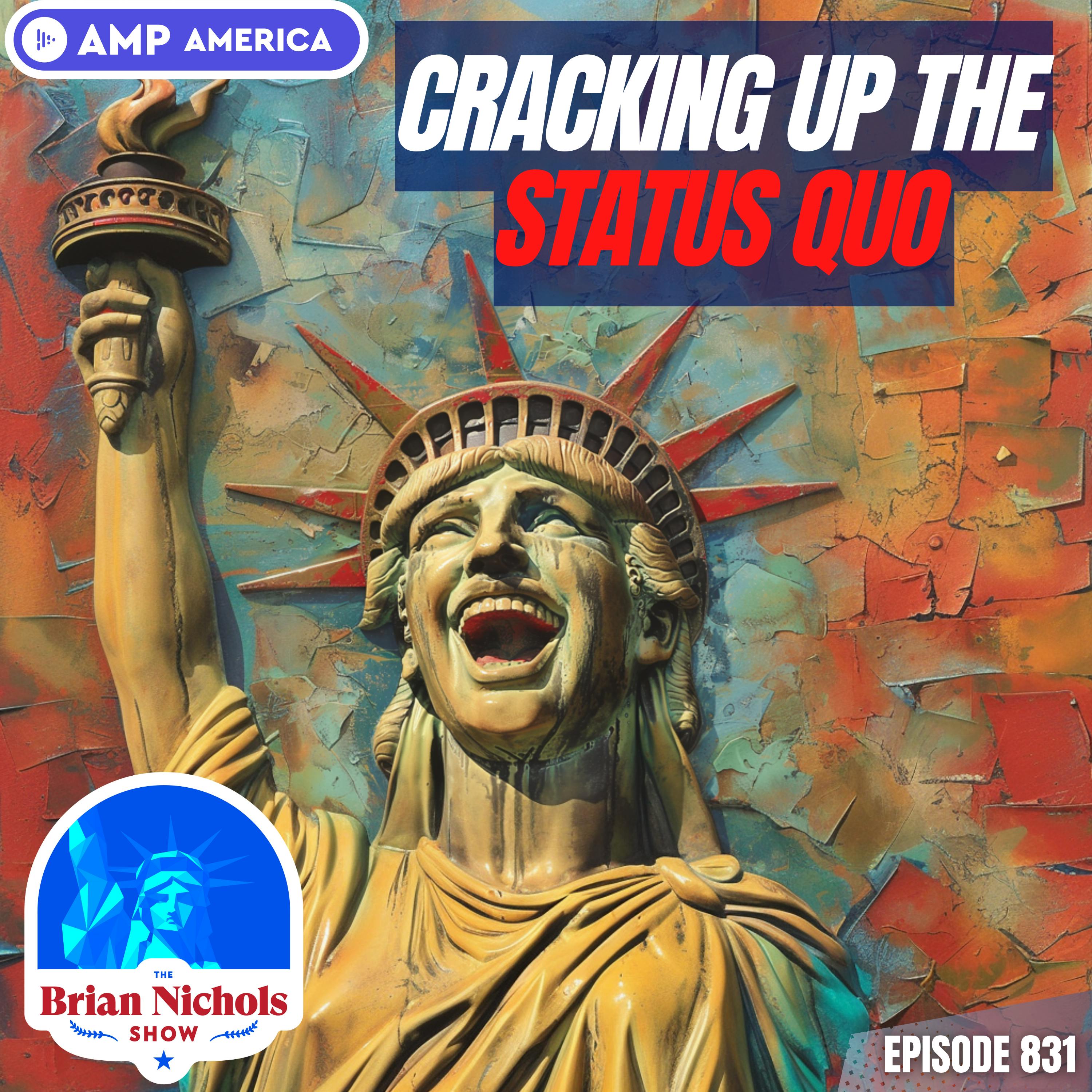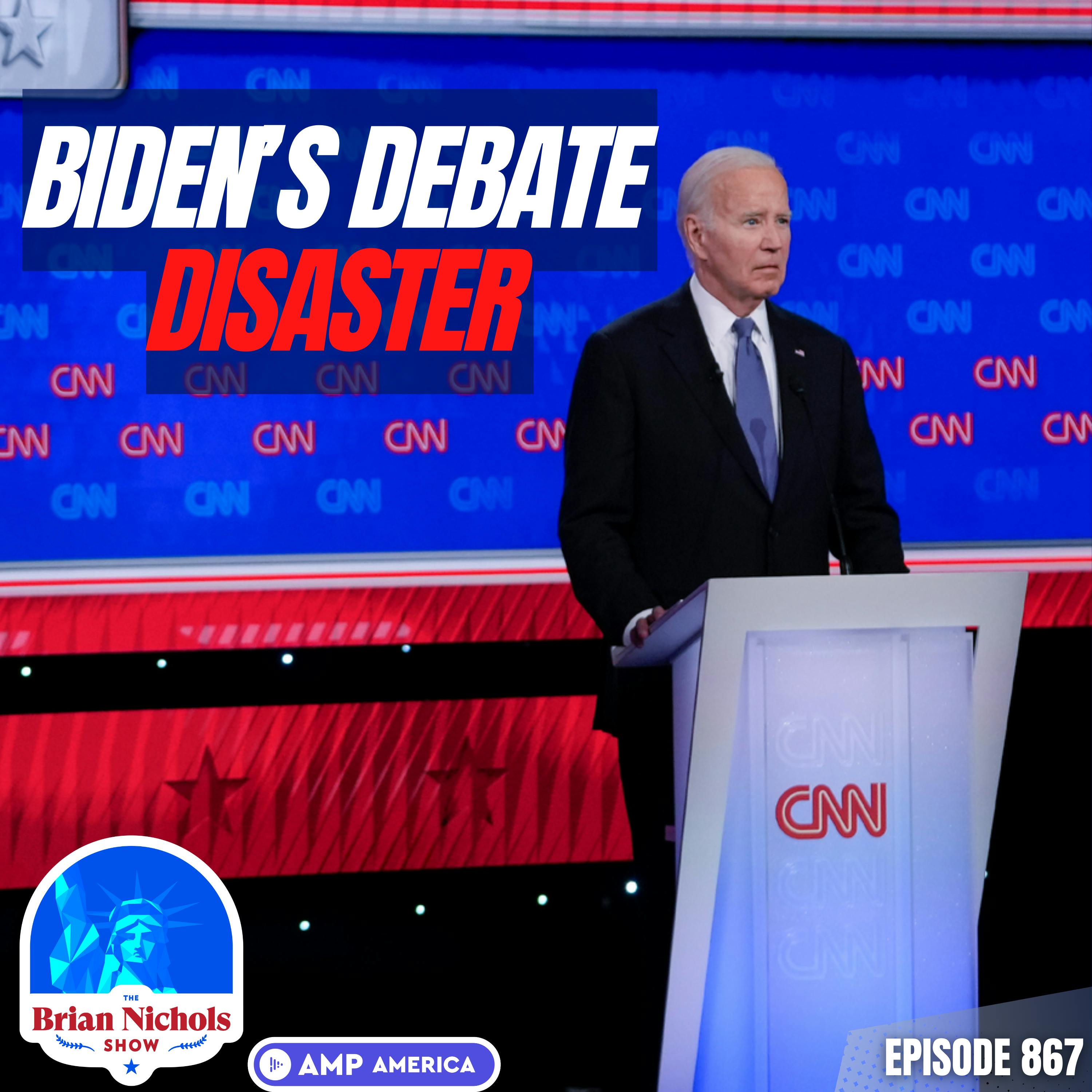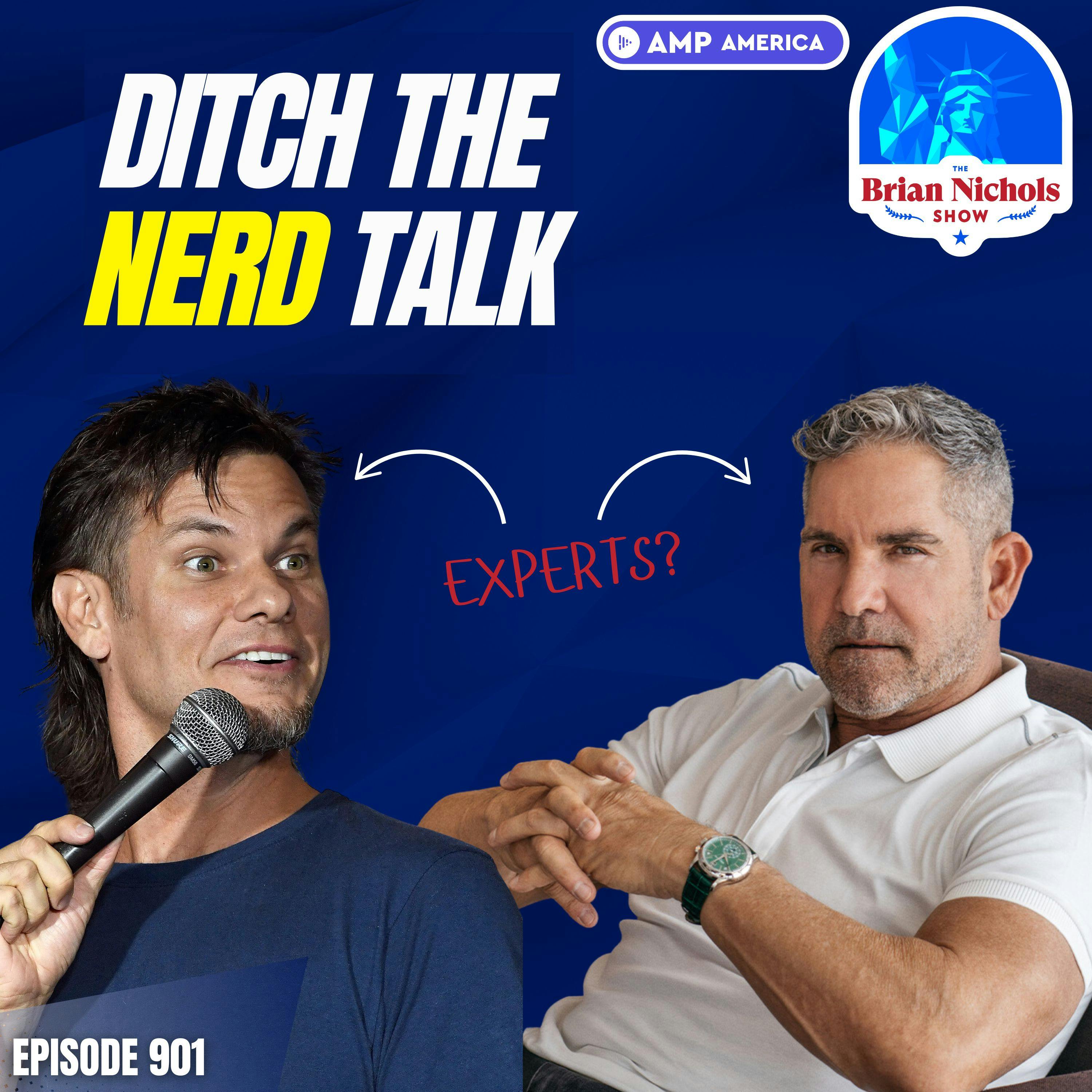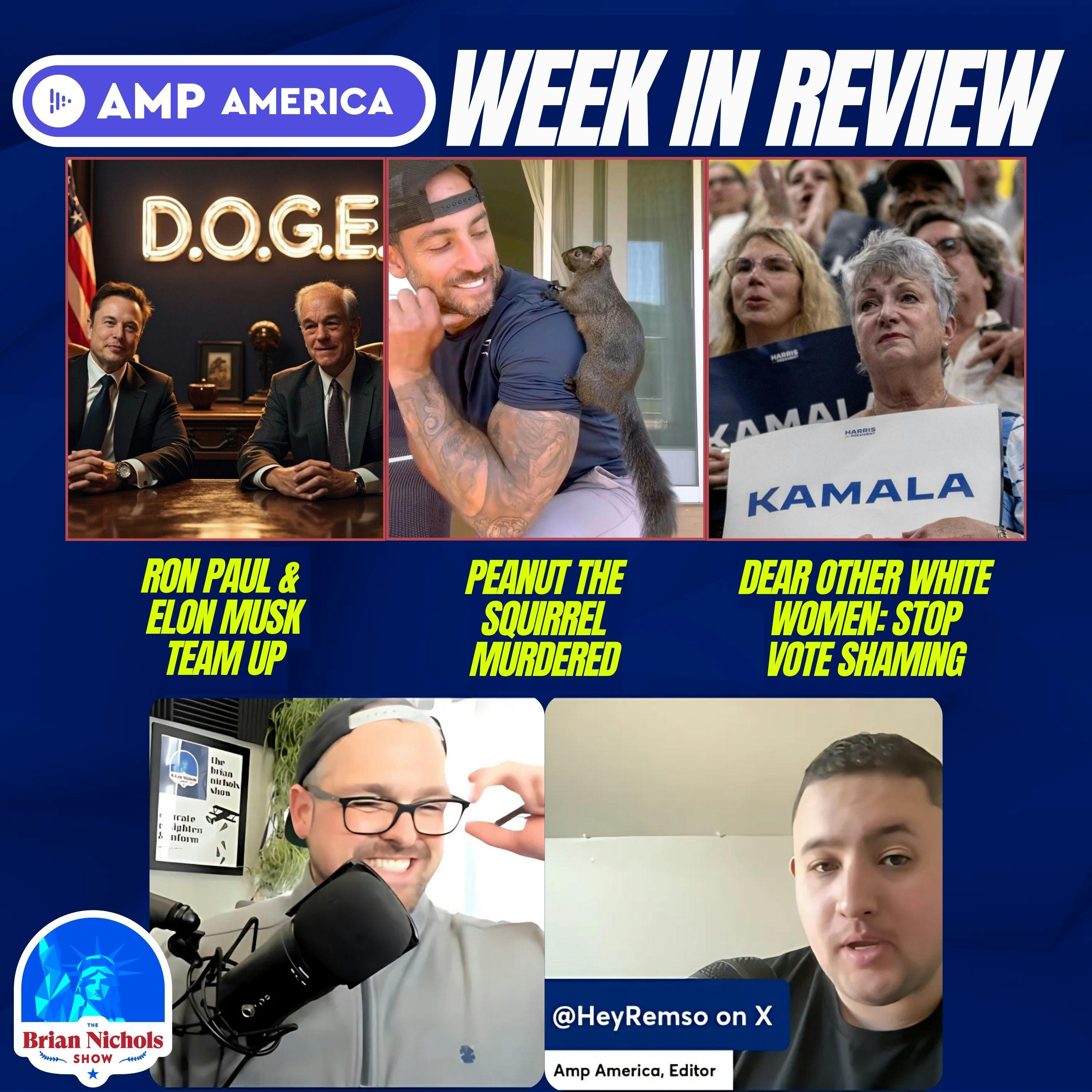871: The Brain Science Behind Great Storytelling EXPLAINED
Expert storyteller Andrea Sampson reveals how to use emotional language, sensory details, and a five-step framework to craft compelling narratives that make complex ideas stick, build trust, and inspire positive change in business, media, and everyday life.
Is storytelling the secret weapon for business leaders and thought influencers? In today's episode of The Brian Nichols Show, host Brian Nichols sits down with Andrea Sampson, a storytelling expert from Talk Boutique, to uncover the power of narrative in conveying complex ideas and connecting with audiences. What makes a story stick in someone's mind? How can you use emotional language to create lasting memories? And why is storytelling crucial for regaining trust in an era of skepticism?
Studio Sponsor: Cardio Miracle - "Unlock the secret to a healthier heart, increased energy levels, and transform your cardiovascular fitness like never before.": https://www.briannicholsshow.com/heart
Andrea Sampson reveals her journey from advertising strategist to TEDx speaker coach, sharing how she discovered her talent for distilling intricate concepts into compelling narratives. She breaks down the science behind effective storytelling, explaining how our brains are hardwired to engage with stories and how sensory language can create powerful emotional connections.
Discover the five key elements of the "story spine" framework and learn how to craft idea-centric stories that leave a lasting impact. Andrea and Brian discuss the importance of vulnerability in business communication and how storytelling can help build trust and rapport in professional settings. They also explore the potential of storytelling to reshape media narratives and create a more positive vision for the future.
Later, Brian challenges Andrea to apply storytelling techniques to address the issue of declining trust in corporate media. Their discussion touches on the democratization of media through podcasting and the importance of diverse voices in shaping our collective future. Andrea shares her passion for empowering "everyday thought leaders" and inspiring positive change at all levels of society.
Don't miss this enlightening episode that will transform how you communicate your ideas and connect with others. Whether you're a business professional, thought leader, or simply someone looking to make a difference, you'll gain valuable insights on harnessing the power of storytelling to create meaningful change in your personal and professional life. Tune in now to unlock the secrets of compelling narrative and learn how to use your voice to shape a better future!
❤️ Order Cardio Miracle (https://www.briannicholsshow.com/heart) with code TBNS at checkout for 15% off and take a step towards better heart health and overall well-being!
🎙️ Tune in to The Brian Nichols Show, available on YouTube, Rumble, and Ben Swann's Sovren. With over 870 episodes featuring local candidates, elected officials, economists, CEOs, and more, each show educates, enlightens, and informs.
🔗Follow Brian on social media: X.com/Twitter (https://www.briannicholsshow.com/twitter) & Facebook (https://www.briannicholsshow.com/facebook)
🔔 Don't forget to like, share, and subscribe to The Brian Nichols Show for more captivating interviews and insights into libertarian solutions for local problems!
Learn more about your ad choices. Visit megaphone.fm/adchoices
Studio Sponsor ➡ Cardio Miracle: Your health is an investment - NOT an expense. - 15%off using code TBNS at checkout
Support our Sponsors!
Support the program with a one-time donation or join our Patreon!
Take our audience survey for a chance to win a "Don't Hurt People, Don't Take Their Stuff" bumper sticker!
Brian Nichols 0:23
Instead of focusing on winning arguments, we're teaching the basic fundamentals of sales and marketing and how we can use them to win in the world of politics, teaching you how to meet people where they're at on the issues they care about. Welcome to The Brian Nichols Show. Well, hey there, folks, Brian Nichols here on The Brian Nichols Show. And thank you for joining us on of course, another fun filled episode. I'm back I'm back in studio after my long summer vacation there two weeks out of office. It was far too long, but I definitely enjoyed it. Brian Nichols here. The Brian Nichols Show your humble host joining us from our lovely cardio miracles Studios here in eastern Indiana. Now if you want to learn more about cardio miracle and why they had been a studio sponsor here for the show, well over a year, stick around, we're gonna talk about how you can on top of listening to The Brian Nichols Show, also improve your heart health by checking out cardio miracle, lower your blood pressure help improve those restless nights of sleep. Stick around. We'll talk about that later. Also, The Brian Nichols Show is powered by our phenomenal sponsors amp America very excited to be part of the amp America family folks, if you're looking for the news, you need to know without all the corporate media bias and fluff had to amp america.com We have news pieces, articles, opinion pieces, podcasts and more. So one more time, amp america.com. And dare I say folks, we're telling some pretty cool stories over amp America also. Yes, elephant in the room. The topic of conversation today. Why is storytelling, so important? Not just for storytellers. But folks in business thought leaders and beyond. So to discuss that and more. Joining us from talk Boutique is Andrea Sampson. Andrea, welcome The Brian Nichols Show. How you doing? I'm
Andrea Sampson 2:06
great. Brian, thanks so much for having me. You've got such high energy, I gonna have to amp myself up a little bit. I guess
Brian Nichols 2:13
that's why amp America is our sponsor here. But no, thank you for joining us, Andrea, really looking forward to today's conversation. Because storytelling, right, we talk about this, not just in the world of sales and business, but also in the world of politics in the world of thought leadership. Storytelling is so important when you're trying to take sometimes very complex ideas, or dare I say not so exciting ideas and bring it to your average person showing why it's important, but more importantly, helping really paint a picture, right? Why you're not just telling the story, but what the call to action is for the audience, either something to learn or something to take away and do something with that story. But I'm putting the cart before the horse. Andrea, do us a favor. Would you please tell us your background in terms of why storytelling is so important to you? Why you focus on storytelling when you're talking to thought leaders and business leaders? And how have you found yourself in this world of focusing on storytelling? Sir?
Andrea Sampson 3:10
Well, you know, I spent most of my career in advertising, and, you know, advertising as a storytelling medium. But here's the thing, I never really thought of myself. And as a storyteller. In those days, it really wasn't until I found myself actually working volunteering as a speaker's coach for TEDx Toronto. And, you know, I didn't know what a speakers coach was. But here I was taking the skill that I had in advertising, I was a senior strategist. My job was to help to be the voice of the consumer. So I was a plant strategist and a planner. So what I would do was I lived between the client and our creative teams, and I would build the underpinnings of the campaigns that you see in market. Well, in order to do that, I would have to take large swatches of data, like all kinds of information, and synthesize it down to a single consumer insight. And that insight is what we would build campaigns upon. Well, when you think about a TED speaker, I started working with these people, scientists, academics, technologists, artists, people who have really complex information. But that complex information is actually shifting the future that we're going to be living all of us. But we don't speak their language they speak science or technology. And so we don't understand what they're doing. And we trust our news professionals or others, to translate for them. Well, and we know what that looks like. It's not always true, or fully true, or perhaps it's a bit biased. And so, what I had to do as a speaker's coach working with these individuals was to help them take their entire life apes work, and bring it down to one core idea, and then put it out there in 15 minutes or less, because that's what a TED talk is. And so in order to do that story is essential. Why you started off by saying, yes, it decodes it, it creates an understanding of complex information. But equally as important, what it actually does is it creates context and connection, it actually lights up our brain storytelling is a powerful medium that we as humans are hard wired for. And so when we hear a story we lean in, our brain does these really amazing things, it starts lighting up, and it starts filling in your story with my memories, and you start living the story along with it. And when that story leads to a core idea, that is where the magic happens, because suddenly, this whole thing that we've been living along with the storyteller has meaning has context. And now the thing that they wanted us to understand, not only do we got it, but we feel it because that's what stories do. They light us up emotionally. And now we're leaning in. And we really want to do something with that. Because when we emotionally connect with a story, we want to tell somebody else. And therein lies the basis of ideas worth sharing, which is of course, the tagline of Ted. And so, you know, when I, I learned that I had the skill, I didn't know I had the skill, which was to, you know, take somebody's life work and turn it into an idea. But I, you know, it was I had been training my entire career for it. And so I opened top boutique with the intention of helping experts and changemakers become storytellers so that their life changing work, their future changing work, could be understood by all of us. And we could start to understand that the future is not as bad as we're being told, because there are some really smart and really good people who are working on making changes that we all need to know about. And so hence, we love TED talks, but we love, we love stories even more.
Brian Nichols 7:22
So I'm gonna make this real by telling a story about that, for my day job, right? I'm not a podcast host by trade, though, that would definitely be a lot more fun, probably not, I'm just teasing. I love my job. I love helping do sales and marketing for these businesses that I work with. And for my day job, one of the businesses I've been working with, they are a contact center company. So when you call into your favorite organization, Nike, Adidas, whoever it may be, and you get that, you know, press one for English, press two for Spanish. And then, you know, do you go through a robot voice or you get a live person, right the technology behind the scenes, that's what my the company I'm working with, that's what they do. And we talked about this, when I'm talking to new sales folks, you know, we have to be buzzword certified, which means if you're in this industry, it's called CCAP. Right CCA s Contact Center as a service as a software, you you're talking about IVR IAVA is all these different acronyms that mean nothing to your average person. But to us, it means something, right. And when we sat down when we were doing a big rebrand here, at the beginning of the year, we had to take the buzzwords and turn it into meaning. And we actually did just what you're talking about taking an entire company that was very well established and saying, We're going to the office space, what would you say you do here, right? And when you sat down and we figure it out, we said, we're not going to go in and change the environment by creating brand new technology. It's game changing. But what we're going to do is we're going to create contact centers that people love, or at least don't hate as much. And that right there, right, that presents an emotional connection that I can say that to every single person I know. You can see right now, Andrew, you're nodding in agreement, because we've all been on the phone. 3040 50 minutes just waiting for someone, please, please help me out here. I had one guy I interviewed for another podcast, he was on hold for over 20 hours, 20 hours, like the fact that he couldn't write he kept his phone next to his bedside when he went to bed at night like that. Just it blew me away. And when I talked to him, and I say you were creating contact centers that people love, or at least don't hate as much. He smiled and he laughed and he told me his story. So I think right there in your you're painting such an important picture for the audience to take away today. Whether you're in politics, you're in business, you're a thought leader. We're just you're an average, everyday normal person, right? If you want to take your ideas, no matter what they are, or how passionate you are about them, and actually get people to care. Going back to the intro of the show, you got to meet people where they're at on the shoes they care about? And why not do the storytelling to help paint the picture more more pretty, I guess, right?
Andrea Sampson 10:06
Yeah. And so fun fact, I worked for a contact call center went many, many years ago, I was an account manager at a contact call center early on in my career. So I know your business, I usually pretty well and funny, funny funnily it was in the days, just as technology was coming in. And so I used to actually have to how I used to have to write the specs for the custom software that we that we were building, because in those days, we didn't have all the databases, we were building it. So anyways, that's a you know, that's a million years ago now. But, you know, coming back to what you were just saying, you know, yes, creating that connection, is absolutely essential in terms of building the story so that people understand it so that they connect, I mean, the story you just told, you know, the, you know, the call centers that people love, or at least don't hate as much, you know, what's great about that is it evokes an emotion right away. So we get it right, because we all have had an experience in some way, shape, or form. But also, you know, telling the story, through the lens of your own personal experience, or the personal experience of the guy who was on the line for 20 hours, what we're doing is we're getting to know each other on a personal level, in a business context. And what that does, is it takes us out of the, you know, the the suit and tie or the armor that we wear, right? Because, I mean, unfortunately, when we meet each other as business people, and especially in sales and marketing, we're suddenly in this place of separation, you're trying to sell me something you're trying to pull the wool over my eyes you're trying to, and so I don't trust you, because I believe you've got an ulterior motive, you're trying to sell me something? Well, what story does is it? it equalizes us, it normalizes us. Now, what I've done is I've told you a little bit about me, you know, I just told you backstory, I worked in a call center, you know a little bit more about me, you might want to know more. And I was suddenly it's like, well, we're on common ground, or to some degree. And so now we've got something to talk about. And we can trust each other on that level. And if we can trust each other on that level, maybe we can trust each other on another level. So stories help us bring the vulnerable human into an an arena, where the vulnerable, vulnerable human doesn't often want to play. But it's safe to do it through story. And then our ideas become something that we can share with a level of confidence that that other person isn't going to take them away from us or belittle them or because now there's context. And there's real vulnerability along with it. There's a human there. It's not just some sales guy who's trying to sell me something. It's Brian, who, you know, has spent his career doing this and really cares about it and believes that he's servicing not selling. Now I see something different. I
Brian Nichols 13:10
had Victor Antonio on the show back two, three years ago, he's very much in the world of sales. He's a big influencer. And he, he's around the idea of finding the why behind why people buy. And one of the things he consistently promotes is stop selling, start helping. And I gotta say, Andrea, that's been one of the things over the past few years, I've really, like, I've internalized that. And I've added a little bit to it, where you're helping, but you're also creating value, right? And I think it's so important to not just help and create value, but specifically to understand who you're helping, and how you're creating value for that person. So when we're storytelling, how, how should we look at the audience that we're speaking to, and be able to tailor a story so it more and more impacts the actual emotional triggers? In our audience versus just a I'm going to use the word generic story that we maybe tell you, you can tell that story to the Chamber of Commerce, you can tell this story to the Lunch and Learn right, like, but how do we make it so it's more hyper personalized to really get the most out of storytelling? Well,
Andrea Sampson 14:23
I think, you know, if I think back to my days in advertising, we used to tell case studies all the time, right? And a case study is a story. Sure it is. But it's not a very good story. Because really, it goes what was the problem? You know, what was the impact of that problem? What solution did we employ and what was the outcome? And that's kind of me first of all, right away, you can see that that framework is really pretty staid, it it sets you up as an expert. Yes, except none of us are really experts because the reality is, we don't know everything. And even that story. He is not going to really, you know, tell the story that somebody else needs. So when we tell stories, what we want to do is a couple of things. First of all, use emotional language really, really important. Why? Because our brain loves emotional language. And what we want is to light up our brain. So our brains are, we have sensory cortices within our brains sight, sound, touch, taste, so use language, that impact that actually lights up one of those cortices. So he'll give you an example. And this, just feel this. So if I, if I were to say to you, he has rough hands. That's just a fact. Yep. Okay. Now, I'm just going to add one word, and I want you to feel the difference on this. He has rough, leathery hands. There it is. Yep. There's a story in leathery. Right. So
Brian Nichols 15:51
it's been you've been spending time laboring? Yeah, exactly. See,
Andrea Sampson 15:55
see what you did what your brain did? And did you notice how it felt differently in your body to like, right away?
Brian Nichols 16:01
I literally, I rub my hands together when you said leathery. Yep.
Andrea Sampson 16:05
So so these are when we use emotional language, we use sensory language, you know, talk about, you know, we can say I walked in, and I, it's the room smelled like my grandmother's house. What are you smelling right now, you know, you're probably smelling pies and cakes, or whatever, you know, smell is one of the biggest triggers of memory. Now, there's a reason why we're doing this not just to light up brains. But it's also because when we light up the brain, what we're doing is we're creating a memory trigger. Because what memory what our brains are both associative and predictive. And storytelling can actually address both of those things. So what we want is an association for them to remember what we're saying. So when we say he has rough, leathery hands, and then we go on to tell a story about how our product actually helps to remove the hard work. Now we've got a memory Association, what it also what stories also do, because our brain always likes to be just slightly into the future, it's always predicting what's coming next. So when you're telling a good story, a story where there is a logical flow to it, our brain is engaged, going, Oh, I think he's gonna go here, I think he's gonna go there. So we use a framework we call the story spine. And the thing that I like about the story spine, and I've kind of altered it is not mine, it's you can find it anywhere online. But I've altered it because I've learned so much about the brain science of storytelling. And what I love about the story spine is that it's only five steps to storytelling. And it can be imbued with a lot of these more scientific aspects of storytelling, that actually help people to remember and to create this prediction. So there's really just five elements. One is the environment, where's the story taking place? So it's the sense of place so in first of all, this forces you into the story, not outside of it, telling this story? So be there, feel it? Where are you I'm sitting in a boardroom, and I can smell stale coffee, and hear, you know, hear the chatter in the background. You know, we're all there with you. Right? So you want to bring the person in. Next is characters whose in the story with you characters have names, and they have backstories. They don't have to be long, but we want to identify them. So it's me and Brian, and what what are we doing? You know, Brian, Brian is this amazing podcast host that I met years ago. And he's teaching me something new. So now, we know about me, and we know about you. And we've got a little bit of a backstory, we know where this story is taking place. Now, most people when they start a story, they jump into the the point of the story the other day, this thing happened. Now, don't do that, right. So you start with the environment, you move to the characters, and the environment, and characters tend to come up together for obvious reasons. Now we can move into the point, what's the reason you're telling the story? Now, that's an important piece. And we want to be careful about how we reveal the point. Because the point what we want is, first of all, the thing that was going on in that moment, okay. And then we want to create what I call a raising of the stakes. So that's point number four. This is the tension point of the story. And this is what every good storyteller knows how to do. And this is what sets our brain on fire. Because what you want is you come in to the point, here's what happened. And then you have that I like to call it the and then moment, raise the stakes, what happened Okay, now you can raise the stakes, many times you can keep that going and really get your audience sitting on the edge of their seat. And then the the fifth piece is what happened what was the outcome? So five easy steps, the environment, the characters, the issue or opportunity? At the raising of the stakes and the outcome, now, when you're telling a story that has an idea inside of it, what you want to do is you want to go to that moment, that tension point when you raise the stakes. And you know what your idea is, because when you're telling a story, I call it an idea centric story. Because you have an idea that you want to put inside of it, you know, your destination, your destination, is the idea. The story is the carrier for it. So what you're doing is you're you're building that story, knowing you're going to an idea. So when you get to the moment of raising the stakes, and you've got your audience sitting on the edge of their seat going, Well, what happened, you transition to your idea. In that moment, what you've done is you've created a metaphor for your idea. And if you're doing that at the opening of a pitch or a presentation, you don't ever come back to that moment, until you're ready to close the entire pitch or presentation. You keep the audience at bay, you go to other parts of the story, you might tell other things throughout that presentation. But you leave that place that that moment of tension until you're ready to close it, because it's an emotional place that you can use as a technique to bring your audience right back to that moment, right at the close. And of course, at the close of any pitch or presentation, what you want is for them to remember why you just told them everything you just told them. And that story, that moment brings them right back to that place. And then you reiterate that idea. So now they've got it cemented in their mind, everything you wanted them to know.
Brian Nichols 21:43
Wow. So there's the foolproof plan now, I'm gonna give you a homework assignment. Maybe you can actually help us on this, this call this podcast today, Andrea. So I'm going to lay the groundwork right now you look at our corporate media across the board, right, left or right. Trust is at an all time low. And I I'm I'm gonna give my personal bias in my diagnosis, probably I think part of the problem is that a lot of folks in the corporate media have a narrative that they want to tell versus telling the story of what's actually happening and the importance they're in. So what can we do for both both sides of the corporate media to get some trust back? Is it possible to get some trust back by leveraging storytelling techniques that do not lean one way or the other do not lean politically left or politically right? In your you're trying to insert a narrative but rather take the very boring sometimes facts and figures, the stats and stuff that your average person's like, alright, I read the journal. All right, we're good. I'm going on with my day. I'm gonna glance at the headlines. But we see the headline, it, it sparks something in us to your point, that emotional trigger, and then I started reading it. And by the way, I've seen this for, again, both sides of the political aisle, I'll read an article. And I'll start out and it starts the it was a blustery day in the 100 Acre Wood. And I'm like, Okay, here we go. I know, it's going to be one of those pieces where they're going to be telling a story. And there's going to be their their bias just right there. And it happens all the time. And for me, I this is what I do I stop reading it. I say, I don't want to read this anymore. I know what you're trying to do. So how can we help the corporate media, learn from their mistakes with what you've taught us today, to present information in a way that's compelling. It's not leading folks with a bias, but rather with the things they need to know, right? That the compelling stuff that is important, but doing so in a way that does resonate, it does trigger those those memory connections that you were speaking about. So people don't just read the news. And then they go on, you know, they're drinking their coffee, and they just go about their day forgetting what they read 10 minutes earlier, that actually sticks. So when they're, you know, they're talking about inflation, or whatever, right, and they, they go to the store, and then they see that the price is at the grocery store. And they're like, Oh, my God, and then they're like, they talked about this in that story, the article I read earlier today, like, how do we do that better?
Andrea Sampson 24:03
Well, I think one of the challenges with doing that is that the corporate media has so undermined trust, that you can't just build it back with a technique. That's the problem. And that's why when you're reading the, you know, on a blustery day in the 100 Acre Woods, you're like, you're just telling me a story. And I don't believe you, I don't believe you, like, you know, that's the problem. So I think there, you know, as you were asking the question, I was really thinking about, okay, how, how could they do that? And I think there's there's two things that came to mind. One is, first of all, I think it can't be any of the people that we know today are doing it right. Because you're not going to regain trust in people that you don't trust. You know, no matter what they say to you. You've already you know, fool me once you know, you know, like that's where you are. We all are right? So corporate media has a lot to it. atone for in the world for where we are because they've told us far too many mistruths. I won't go so far as to say that they've lied, maybe they have. But what I do think they've done is they've misled us. And they've they've, they've presented information in ways that have have that we know simply are not conducive to the future we want. So So right away, I think I don't think corporate media can come back from where they are. What I do think, though, is that we need people who are telling truths, and who haven't been undermined by that whole world. And so and I think what we need is a collective voice that's building a vision for the future that we all collectively want. And it's not one voice that's going to do that is going to be many voices. But we all have to actually be adding our voice to that. So when somebody who is outside of that picks up and reads like, you know, if we start creating, like, what is the future we want? We're so in the moment right now, we're forgetting that every moment today, every choice we're making today, is defining future and Draya and future Brian. Right. So so, you know, like, we are making those choices right now. And so what if we actually were were a whole lot more clear on it, and perhaps brought other voices in with us. So that, you know, the voices are the what we're seeing is something that actually makes sense. You know, I work with thought leaders all the time. And I see the the future that they're creating. And that's what I wanted, you know, that was one of the reasons why I started talk boutique. Like I remember, my very first year working in TED, and, and like, I've been working in advertising my entire career, I thought I was pretty plugged into what was going on in the world. And I remember that first year working with, I was working with a scientist who was working on the Human Genome Project. This was in 2011 2012. And I had never heard of the Human Genome Project. And they were, you know, at the time, they were looking at re sequencing the DNA. And, you know, why were they doing that like, and when I started to understand what this whole thing was about, I was like, Why isn't anyone telling us about this, like, this is pretty important stuff. This is like what it means to be human here. And no one's even talking to us about it. And that was when I started to really understand that there was no one telling us the real, the good news story. They were telling us all the bad news story, oh, here's why we need to sequence the DNA because, you know, if not, whatever, but they're not telling us that, you know, like, when we look at where we are today, with gene sequencing and beyond, now, we're into regenerative medicine. I mean, you know, right now, I mean, and some of the people that we work with, because we work with a lot of regenerative medicine scientists, you know, we're building we've got brains in petri dishes right now working brains. Now, why is that important? Well, because you can test drugs on working brains that will cure things like Alzheimer's, or Parkinson's, or you can't do that in a human. But you can do it when you've created a little organ at that is not a full brain. It's just a little organist, but it works. And it's the only way to see a working brain. So when we're coming back to your question, how do we actually change what we're listening to so that we can trust it? We all get involved in creating it, and we add our voices, and we don't accept corporate media, we start to turn against it. Like, I think I don't listen to the news ever. Because it's propaganda. It's propaganda. And so, you know, when we turn away, when we actively say, you don't represent me, then we have the opportunity to create the truth that does represent us.
Brian Nichols 28:56
I mean, Andre, I'm gonna channel my inner Obi Wan Kenobi here. That's why I'm here, right? Because I saw this and the writing was on the wall. I'm like, I see the left side of the aisle and the right side of the aisle, and they're presenting both of their narratives. But something's missing, right? There is this, dare I say that common sense extremists out there who are just looking at the world and saying, this ain't right. And I know that whatever both sides are promoting as their truth, it definitely is, is neglecting a large portion of the truth. So let's start talking to folks. Let's start having folks like Andrea here on the show. And by the way, we've had so many folks across the board, I've had marketers, I've had engineers, I've had entrepreneurs. I've had scientists, I've had doctors. I mean literally go through the list of guests here over the past 870 Plus episodes. And we've had just some of the most incredible conversations in such detail that would never take place on your traditional corporate media because they're looking for sound bites, they're not looking for solutions. And that is where err, I was so excited to be able to see podcasting become a medium that more and more folks could dip their toes into because it really was a democratization of media. It gave us the average person, a microphone on par with Chris Cuomo from CNN or Sean Hannity from Fox News, right? You don't have to be a blowhard to sit there and yell into a microphone to get your base riled up and get your your sponsorships brought to you by Pfizer brought to you by Boeing and like no, none of that. Let's talk about the real issues that real people talk about. And by the way, this is my final thought. And I'll turn things over to you. I just I want to go back to something you said. And I cannot echo enough the positivity we need to have something to look forward to. I used to have a professor back in college, Dr. Trombley, you're the man used to say that the evening news starts by saying Good evening and then they proceeded to tell you why it isn't. And if that is not exactly what we see on our headlines on on the TV, on the social media, it's It's everywhere. It's it's doom and gloom, the the ticker the clock that's supposed to show us how close we are to doomsday. It's been five minutes that doomsday for like 50 years at this point. Just everybody is exhausted with the constant anxiety of doom and gloom, they want something positive, they want something hopeful. And it's on us, like, we know that the corporate media isn't going to give that to them, we need to be the change. And by the way, Andrea, that is exactly why we're having conversation like we are today, because this is how we change the future is by actually getting it. Exactly, exactly. Andrea, and that's my final thoughts for today. What do you have for us in here, as we wrap things up? Well,
Andrea Sampson 31:44
thank you for what you're doing, Brian, and I couldn't agree more. I mean, the reality is, it has never been more accessible to have a voice in this world. And that is what I stand for. I stand for creating voices in this world using your voice, adding it to the future we are co creating, because when we, as those who are choosing to see the positive side, get together and CO create together, we will create a future that all of those naysayers can't even see coming. And that's the cool thing, we get to choose that we get to create it, we get to think it. And so you know, Thoughts become things so become, you know, so choose good weapons. And that's how that's how I live my life. So Brian, you know, I, I love what you're doing, thank you for being a voice in this world. Thank you for creating change. And and anyone who's interested in learning more about how they can do that, you know, happy to have a discussion with them on how we might support them in building their voice and being you know, what I call an everyday thought leader, because I think thought leaders, you know, we tend to think of, you know, media or presidents or, you know, you know, leaders of industry as the thought leaders, but the reality is, we all have the ability to be a thought leader. And so when we take thought leadership and take that big distance thing out of it, and we recognize that I can be a thought leader in my family, I can be a thought leader in my community, I can be a thought leader, with my at my kids school. When we do that what we do is we inspire others to do the same. And when we all stand up, there's way more of us than there are of those who are telling us the world is going to hell in a handbasket. And I don't believe that I know I've seen what work is going on in this world. And I am so hopeful for the future that we are creating together. And I say Come join us. Here
Brian Nichols 33:48
here. All right, Andrea, you gave us the call to action. If folks would like to continue to learn more about storytelling, they should reach out but a crucial parts missing there. Where where can folks go ahead and continue the conversation? Email social media hit us? Yeah, so
Andrea Sampson 34:04
you can follow me on LinkedIn. I'm there live every day doing my thought of the day. You can visit our website, tuck boutique.com and or email me at Andrea at Tuck boutique.com So love to hear from you follow me also on YouTube, the thought leader Academy on YouTube. Andrea
Brian Nichols 34:25
Sampson it has been an absolute pleasure. I've truly enjoyed this conversation and I know my audience quite well I know they enjoyed it because we I get this quite a bit Brian I love the show. Sometimes you're a little bit more in the world of politics. Sometimes you're in the world of business. Sometimes you're in the world of public policy or just what's happening like current events and this episode literally brings all of it together. It shows how everything is connected because too often people just kind of get siloed right they have their their tunnel vision. They have their problems they have to deal with I get it but this hopefully will help bringing things together show you not just how to talk about these ideas but specifically giving you the blueprints to have real success to have your ideas turn into action talk boutique. Andrea Sampson, it has been an absolute pleasure, folks, if you enjoy today's episode, links are all going to be in the show notes. So please go ahead and reach out to Andrea let her know you heard her over on her appearance on The Brian Nichols Show. I'm know she'll definitely love that. And I love that as well. And other than that being said, Follow your surely on social media. You can find me on Twitter, Facebook, Instagram at B. Nichols liberty. As for the podcast, you can find it on your favorite podcasting platforms, Apple podcasts, Spotify, YouTube, music, and more. If you're more of a video person you like to watch your content, head over to YouTube, Rumble, Twitter, Facebook, wherever it is you'd like to watch video content, you can watch The Brian Nichols Show in all of its entirety. Now, by the way, we do have over 870 episodes. So if you're like you know, I wonder if Brian's talked about x? Probably not Twitter X actual like blank conversation. But we did talk about x at one point, don't worry. So go ahead, go into the Brian Nichols show.com Go to that little search bar search any of the topics we have again, all those episodes over on the homepage, you should be able to find any topic you want to dig into. And again, we've had literally hundreds of guests much like Andrea here on the show, talking about these issues in very much long form and you're gonna get a lot more value listen to those episodes, then you would listening to some talking head on the corporate three letter TV channel on the evening news. So what's our goal here at The Brian Nichols Show Andrea, you'll like this educate, enlighten and inform that has literally been the entire outcome of today's episode and I'm just so thankful to have you on the show Andrea so with that being said, um, any final words as we wrap things up anything you want to leave the audience with today?
Andrea Sampson 36:54
Well, you know, like I said, Thoughts become things so choose good ones. And Brian, thank you for everything that you are doing. We the world is better because of it. So I have so enjoyed today's conversation and I look forward to the next one you take
Brian Nichols 37:11
likewise, Andre that the feeling is 1,000% mutual. So thank you for joining us. And one final plug folks that is to please support the folks who support us that is our amazing studio sponsors like cardio miracle also our other sponsors like up America evils CBD liquid freedom, energy, tea, and more. All those amazing sponsors found over on Brian Nichols show.com Hey, either way, just use code TBNS at checkout, some special discount or gift will be applied at checkout one more time code T B and S. That's all we have for you for today. So with that being said, Brian Nichols signing off here on The Brian Nichols Show for Andrea Sampson from talk boutique. We'll see you next time.
Transcribed by https://otter.ai






















